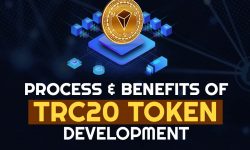Token standards are a crucial part of a blockchain ecosystem. They define the rules to be used by developers when creating a crypto-token for use on a particular blockchain platform.
Different blockchains have different token standards. Some have more than one. Ethereum alone has more than 10 token standards collectively called ERC token standards.
A token developer looking to create or implement their crypto token on the Ethereum blockchain must choose from one of the different types of ERC tokens, which are as given in this ERC standards list:
- ERC-20
- ERC-165
- ERC-721
- ERC-223
- ERC-621
- ERC-777
- ERC-827
- ERC-884
- ERC-865
- ERC-1155
ERC standards provide a set of rules or a path for token developers to follow to ensure compliance with the Ethereum blockchain environment. In this article, you’ll get to know about the different ERC standards, their role or purpose in the Ethereum platform, and the latest ERC token trends.
Want to Develop Ethereum-based Tokens? Fill out this form!
Let’s start with the basics.
What is an ERC Token Standard?
Imagine you have a special computer system called Ethereum which allows you to create your own customized crypto coins or tokens. But to make sure your token on Ethereum works smoothly and is able to access the various features of this awesome blockchain system, it must be designed to follow the standard rules or guidelines of the Ethereum platform. These rules or guidelines are called ERC standards, where ERC stands for Ethereum Request for Comments.
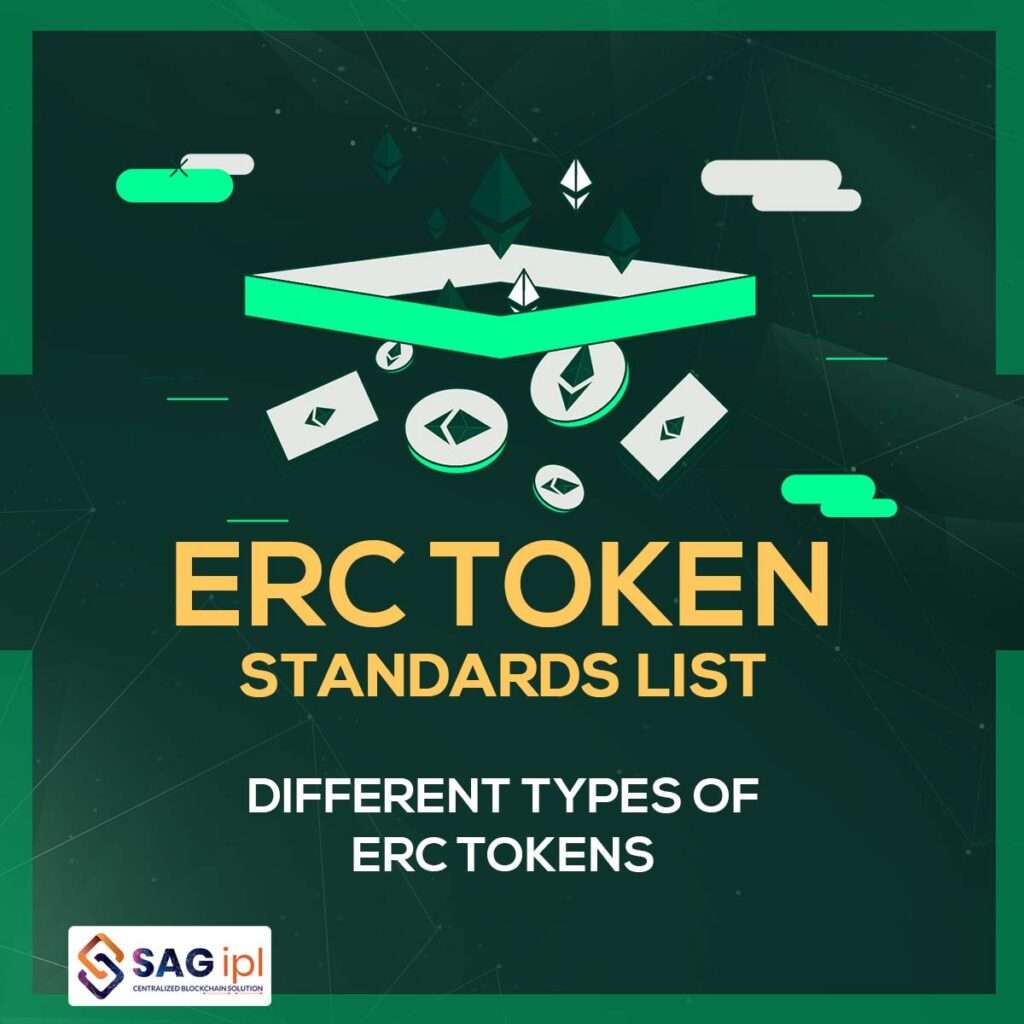
ERC standards are a set of rules that all tokens on the Ethereum platform must follow. These are designed to help developers easily & efficiently build their tokens on one of the most powerful blockchain platforms out there. Some of the most common ERC standards are ERC-20, ERC-721, and ERC-1155.
ERC standards contain details like the functioning of tokens, token transfer, ownership, security, smart contracts, etc. Following these standards will ensure that your token can seamlessly operate and interact with other tokens in the Ethereum network.
Why multiple ERC token standards?
If you’re wondering why there are multiple token standards in the Ethereum blockchain, it is to expand the ecosystem access to more users worldwide and support many new use cases. Each new token standard is usually an upgrade to the previous standard, but each has its own features and applications.
ERC-20, for instance, lets you create basic Ethereum-based fungible tokens that come with features like seamless trading and built-in payments in various places.
ERC-721 is an upgraded Ethereum standard that is used for making advanced or special tokens, such as non-fungible tokens or NFTs, which are designed to represent unique digital assets.
Then, there is the ERC-1155 standard, which combines the features of the above two standards and is generally used for building tokens for games and other creative projects.
ERC standards enable developers to easily create different types of ERC tokens for a variety of purposes and application types. All ERC tokens are fully compatible with the Ethereum blockchain ecosystem and can use the ecosystem features in their respective applications.
Different Types of ERC Token Standards
As mentioned above, there are several ERC token standards, each with its own unique features and functions. We’ll take them one at a time from this ERC list.
ERC-20 Token Standard
ERC-20 stands for “Ethereum Request for Comments 20″ which is a technical standard of the Ethereum blockchain network utilized for generating tokens based on Ethereum.
These tokens, known as ERC-20 tokens, are made with a specific set of characteristics and are fungible, which means they are interchangeable with one another and can be exchanged for a predefined value.
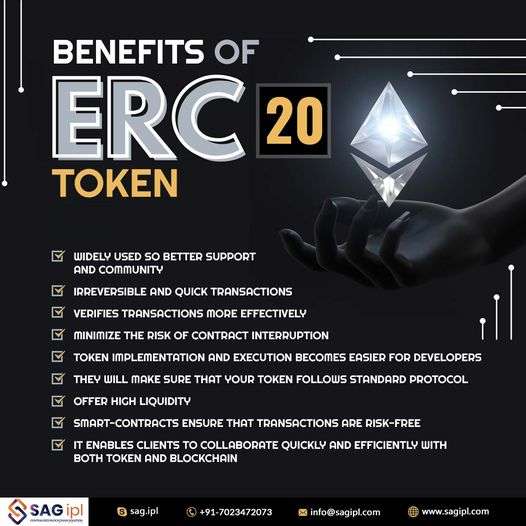
The ERC-20 standard sets rules for tokens to be called ERC-20 compliant. These rules include various functions and features such as checking token wallet balances, sending tokens to others, maintaining smart contract security, and giving permission to access your tokens or wallets.
Following these rules, developers can create ERC-20 tokens that are compatible with other ERC-20 tokens and many apps and platforms to make them accessible to people worldwide.
ERC-20 is the most popular token development standard and is the most common way for developers to create regular tokens on the Ethereum network.
When building your token on the ERC-20 standard, you need to define basic token functions like checking the number of tokens a specific address holds, sending tokens to others, and using tokens for digital payments.
The ERC-20 standard also allows your token to be used with many different apps and services associated with the Ethereum network or that support ERC-20 tokens, allowing a lot of people to seamlessly access and use these services.
As the most popular token development standard, the ERC-20 standard has many use cases, particularly for developing a variety of crypto tokens, including utility tokens, security tokens, and stablecoins. It has enabled the creation of thousands of different tokens in the most convenient and quick manner.
ERC-20 Token Development
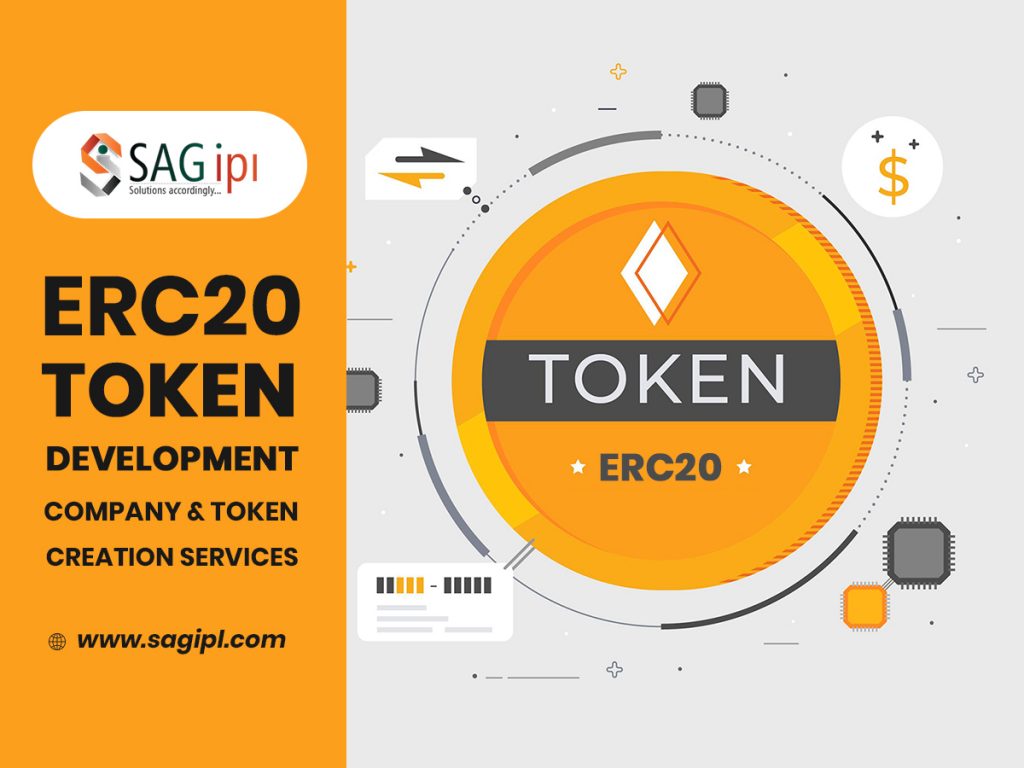
Many blockchain developers use the ERC-20 standard for developing their feature-rich tokens for various use cases. Other than special tokens like NFTs, most other regular crypto tokens can be developed using ERC-20, which has made this Ethereum token standard extremely popular.
ERC20 Token Development services are provided by SAG IPL, where our expert ERC-20 developers will help you build the most outstanding and cutting-edge token (utility token, security token, etc.) for your crypto project. Our token development services are available for all types of big and small blockchain projects.
ERC-165 Standard
The ERC-165 Standard is another token development protocol used in the Ethereum blockchain to determine the capabilities of smart contracts. It actually provides a standard interface through which smart contracts’ functions and capabilities can be determined.
Unlike other token standards, ERC-165 doesn’t define or control the functionalities of tokens themselves but instead, it provides a standardized interface to check for supported features of a smart contract.
ERC-165 does this through a method called `supportsInterface` that allows other applications, including smart contracts, to send a query to a smart contract to check if it supports a specific interface. Each interface is assigned a unique 32-byte hash, which is used for error-free identification of these interfaces.
The main role of the ERC-165 standard in the Ethereum network is to improve the quality of interactions between applications or smart contracts by allowing them to determine the supported features of each other before interacting with them.
This is particularly important for allowing interoperability between different smart contracts and other applications. The standard was introduced with the aim to make the Ethereum ecosystem more advanced and adaptable.
The ERC-165 Token Standard is an important feature of the Ethereum ecosystem which allows determining supported interfaces in smart contracts to streamline interactions and promotes support for various decentralized applications.
If you’re looking to know more about the ERC-165 Standard or need ERC-165 token development services, contact SAG IPL today.
ERC-721 Token Standard
The ERC-721 Standard is a special ERC token standard that defines a set of rules for creating special tokens called non-fungible tokens (NFTs). Non-fungible tokens, unlike regular crypto tokens, cannot be divided or exchanged and each token is unique.
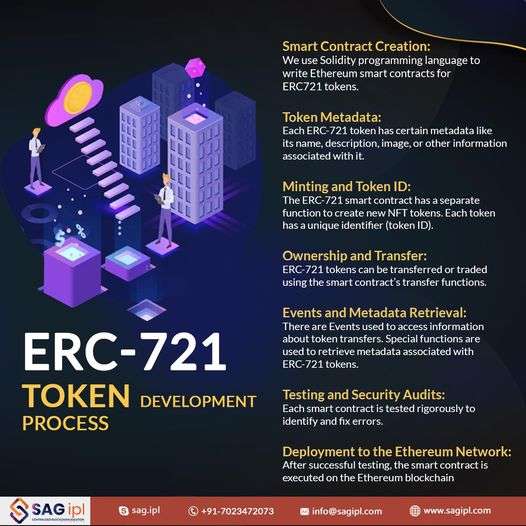
The ERC-721 standard makes sure that each NFT built on the Ethereum network has its own unique identifier, which makes it special and different from other tokens.
This is particularly useful for representing unique things such as ownership of one-of-a-kind digital assets, rare items, collectables, and other digital assets on the blockchain. In fact, this is what NFTs are mainly used for – to represent rare or unique digital assets.
The standard defines various functions and rules to ensure seamless working of the NFT tokens. For example, the ‘balanceOf’ function of ERC-721 lets you the number of ERC-721 tokens on a particular wallet address.
Similarly, the ‘ownerOf’ function lets you check the owner of a specific ERC-721 token. When you transfer an ERC-721 token, the ownership also changes automatically.
The ERC-721 Token Standard has completely revolutionized the world of digital art, gaming, and digital assets, enabling owners to create/buy dedicated non-fungible tokens to claim ownership of their virtual assets. These rare, non-fungible, and tradable tokens can be easily verified when one needs to check the authenticity of a digital asset.
The ERC-721 Token Standard has made possible the creation, verification, and trading of NFTs. If you’re looking to tokenize your rare assets or want to trade your digital assets on the blockchain, NFT is the way to go.
Hire now the most inclusive ERC721 token development services from the world’s leading blockchain development company, SAG IPL.
ERC-223 Token Development
The ERC-223 token standard is being developed as an upgrade to the existing ERC-20 standard. It will function similarly to ERC-20 but has a few upgrades and additional features to improve its efficiency.
As you may already be aware, ERC-20 is the most famous token standard for developing feature-rich tokens on the Ethereum platform. However, it has some limitations. For one, ERC-20 tokens sent to the wrong or incompatible address cannot be recovered and will be lost forever.
The ERC-223 has a special tokenFallback function to overcome this limitation. This additional function enables smart contracts to handle incoming token transactions, particularly for rejected token transfers. This will allow developers to create tokens with built-in handling of token loss during transfers.
As an improved version of the ERC-20 standard, ERC-223 is also expected to have a comparatively lower gas fee per transaction. Unlike the ERC-20 standard where each transaction is processed in two stages for transferring data and tokens separately, ERC-223 allows the entire transaction to be completed in a single step, thus reducing the processing time and transaction cost. It is a more efficient token standard than ERC-20.
ERC-223 has not yet been as widely adopted as ERC-20, but many enterprises and blockchain companies are readily accepting this new token standard as an improvement over its predecessor. If you need these types of ERC tokens, contact SAG IPL for the best price.
ERC-621 Token Standard
ERC-621 is a proposed token standard (not yet developed) for the Ethereum blockchain, which will be created to enhance the functionalities of the ERC-20 and ERC-223 standards.
One of the proposed features of the ERC-621 standard is the ability to allow burning tokens and redemption for other assets. These two functionalities are not available in any of the existing Ethereum token protocols.
With ERC-621, token developers or issuers will have the power to burn unwanted tokens or redeem them for a compatible asset in order to adjust the total token supply or circulation.
Token burning, as you may already know, is a crucial part of the cryptocurrency economy as a way to maintain supply & demand and ensure price stability.
To reduce or adjust the token supply or market circulation, ERC-621 tokens can be burned, which means they will be permanently removed from circulation. This will most likely increase the token price due to the reduced availability if there is a stable demand for it.
Other than token burning, this ERC standard will also support token redemption for other compatible assets. This might allow token holders to redeem their tokens for other compatible assets, including some cryptocurrencies or fiat currency.
This would be a welcoming feature in the crypto space and will greatly enhance the flexibility and utility of tokens by allowing their exchange for different assets.
The ERC-621 token standard is still being considered by the Ethereum community and is far from ready for global adoption. Contact us to find out more.
ERC-777 Token Standard
The ERC-777 Token Standard, also known as “ERC-777,” is an upgrade on the existing Ethereum token standards to improve the efficiency, security, and scalability of ERC-20 and ERC-223 standards.
It proposes many additional functions, such as “operator overloading” to reduce the number of transactions needed per token transfer and makes the transfer process faster and more cost-effective.
It also introduces “callbacks” which enables smart contracts to respond to token transfers to ensure better interaction with other decentralized applications. This will help enhance the overall functionality and usability of Ethereum-based tokens.
Furthermore, ERC-777 includes the “burn” mechanism to allow the burning of unwanted tokens to reduce them from the supply. Another benefit is its built-in support for fallback mechanisms in token transfers which helps reduce the risk of token loss due to transfer to wrong or closed addresses.
ERC-827 Standard
ERC-827 is a proposed token standard for the improvement of Ethereum-based tokens. It proposes to enhance the functionality and capability of ERC-20 and other existing token standards by allowing support for additional transaction data, thus enabling more realistic, advanced and customizable transactions.
The capability of the ERC-20 token standard is limited to token transfers. ERC-827 standard, however, allows additional data to be transferred along with tokens, which will make it possible to perform complex transactions. It also would be beneficial for applications where extra information is required with token transfers.
ERC-884 Ethereum Standard
ERC-884 is a proposed Ethereum token standard that intends to add support for fractional ownership of assets to Ethereum-based tokens. As of now, the existing Ethereum standards like the ERC-20 don’t support fractional ownership of assets.
The ERC-884 standard proposes to extend its functionality by allowing token holders to own/buy a fraction of various real-world assets such as real estate, commodities, and digital assets on the blockchain.
This intends to provide greater liquidity and flexibility to blockchain assets and tokens and allow people to seamlessly trade their digital or physical assets on the blockchain without limitations.
Each ERC-884 token is created to represent fractional ownership in an underlying asset. It can be traded for other tokens and is fungible. It would be like owning a fraction of an NFT.
ERC-865 Token Standard
ERC-865 is a proposed token development standard for the Ethereum blockchain, which was introduced with the primary goal of making token transfers more cost-effective.
It does so by allowing gas fees for token transfers to be paid for by a third party, which is not the sender. It can be particularly beneficial for blockchain apps and services requiring frequent and large token transfers.
The “transferPreSigned” function of ERC-865 allows a third party to pay the gas fees for a token transfer initiated by a token holder who signs a message containing the transfer details but doesn’t personally submit it to the network. Instead, a third party submits the transaction to the network, which helps reduce gas fees and makes transfers more cost-effective.
What is ERC-1155?
ERC-1155 is an increasingly popular Ethereum token standard that allows the creation of contracts with support for multiple tokens. By allowing developers to create both fungible and non-fungible assets from a single standard and include both in the same smart contract, it reduces the need to use separate token standards like ERC-20 for fungible tokens and ERC-721 for non-fungible tokens (NFTs).
This makes token development highly efficient and cost-effective by allowing to manage multiple token types in one contract, as the gas fee is reduced and interactions are simplified.
ERC-1155 has been gaining a lot of popularity by allowing the creation of complex in-game items, NFTs, and digital assets with improved interactivity and usability.
Conclusion
ERC token standards list is integral to the Ethereum platform’s functionality and growth, providing guidelines for the creation of tokens, smart contracts, and blockchain apps within the Ethereum ecosystem. They simplify the development of tokens while ensuring seamless compatibility with other Ethereum apps & projects.
According to a report, there are over 50 ERC standards designed for various use cases. In our article, we have covered only the most important and popular ERC token standards. Hope you find these different types of ERC tokens useful.
If you’re looking to hire a blockchain developer or crypto token development services, feel free to contact us to discuss your requirements with our specialist.


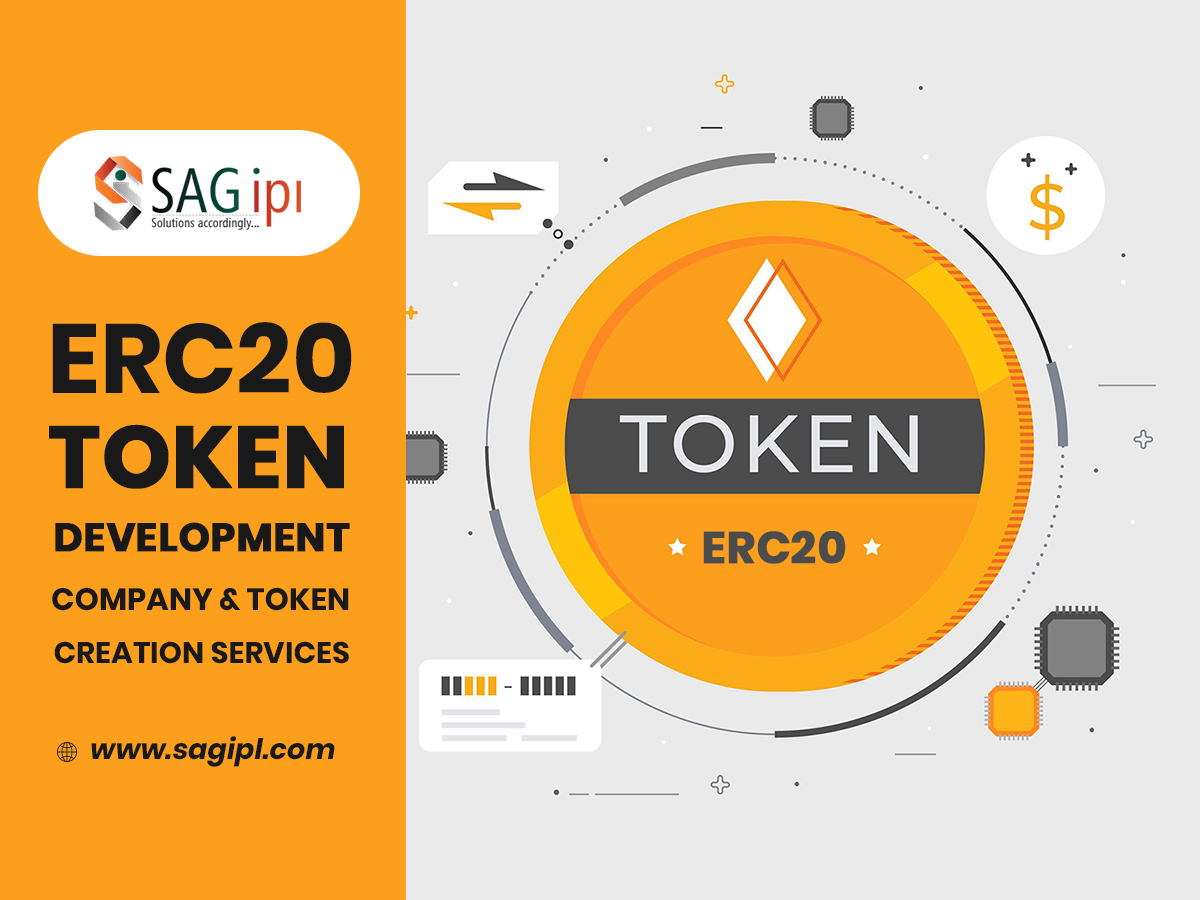

![BRC20 Token Development & Marketing Services for You [2024] BRC20 Token Development & Marketing](https://blog.sagipl.com/wp-content/uploads/2023/12/BRC20-Token-Development-Marketing-250x150.jpg)


